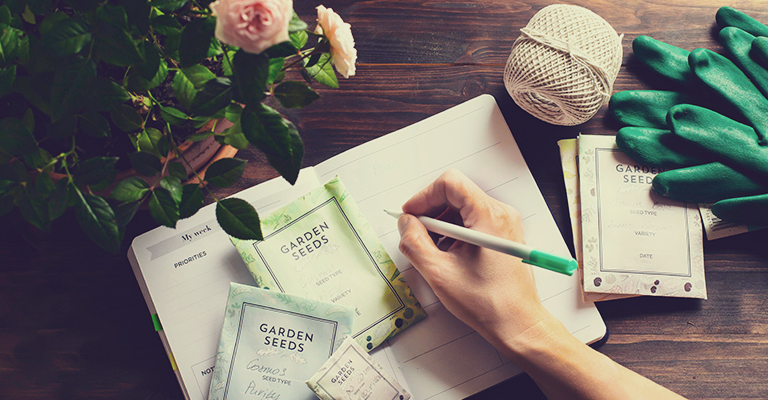
The next gardening season may seem like a long way off in January, but it’s actually a crucial period when it comes to planning your garden. Indeed, experienced gardeners use the first month of the year to prepare, plan and, why not, dream of the next growing season.
1. Order your seeds.
Ordering seeds in January will allow you to choose the best types and varieties, according to your needs and gardening space. Ordering early also leaves more time to find a selection of alternative seeds, should the need arise.
2. Test the seeds you already have.
If you have seeds from previous growing seasons, they’re probably still good. A simple germination test will tell you if they should be replaced. It can be done fairly easily by taking a sample and placing it in a plastic bag with a moist cloth, in a warm place. Check your seeds every other day to see if they’re germinating.
Most seeds last at least two years in the right storing conditions, and some can even last up to five years!
3. Do you know about seed exchanges?
Seed exchanges are a great way to save money and an ingenious means to find unique seed varieties. People bring their seed surpluses or seeds collected in their garden the previous year and leave them for others to take. They can also take what they need from what’s available.
4. Join a local gardening group.
Even if you can find the answers to all your questions on the internet, local horticultural groups are a great resource where you can ask your questions and share information with other amateur gardeners that deal with similar climate conditions.
5. Use your Christmas decorations to protect shrubs and perennials in winter.
Did you know the Christmas trees and other evergreens used during the holidays can serve to cover and protect perennials, shrubs and bushes? Indeed, it’s an easy way to add a little protection against the elements that could damage your outdoor plants.
6. Use your harvest from the previous season to create new products.
We often tend to spend more time indoors in winter. Why not use that time to transform all those vegetables, fruits and herbs harvested the previous summer? Here are a few ideas: jams, jellies, syrups, wine, flavoured vinegars, liquors, dried fruits, flavoured herb mixes, soup mixes, dried fruit mixes for hiking, baking products and a lot more.
7. Buy books about gardening.
Several books about horticulture are available in bookstores. They can be used to broaden your knowledge about gardening, improve your techniques and discover new ones.
8. Make an inventory of your material to be ready when spring comes.
It’ll soon be time to start your seeds. Before heading to the garden centre, take the time to make a list of the seed starting material you already have and what you need to buy. Keep in mind you can reuse many household items as planting material.
9. Make a plan of your planting space.
Drawing a plan of your garden will allow you to know exactly how much space you have to seed. All you need is its measurements, a piece of paper and a pencil. When you’re done, you can decide what you want to plant and where you should plant it. It will also allow you to buy seeds more wisely.
10. Start your seeds at the end of the month.
You can start your seeds at the end of January. For instance, onions should be started at least 10 weeks before they’re planted in the garden. Several vegetables and herbs are slow-growing, so to get good-sized plants, it’s better to start your seeds early.
The best of success to you!
Subscribe to our newsletter to receive our gardening tips, news and more directly in your inbox! Fill in the form below. Please note that fields with an * are required.